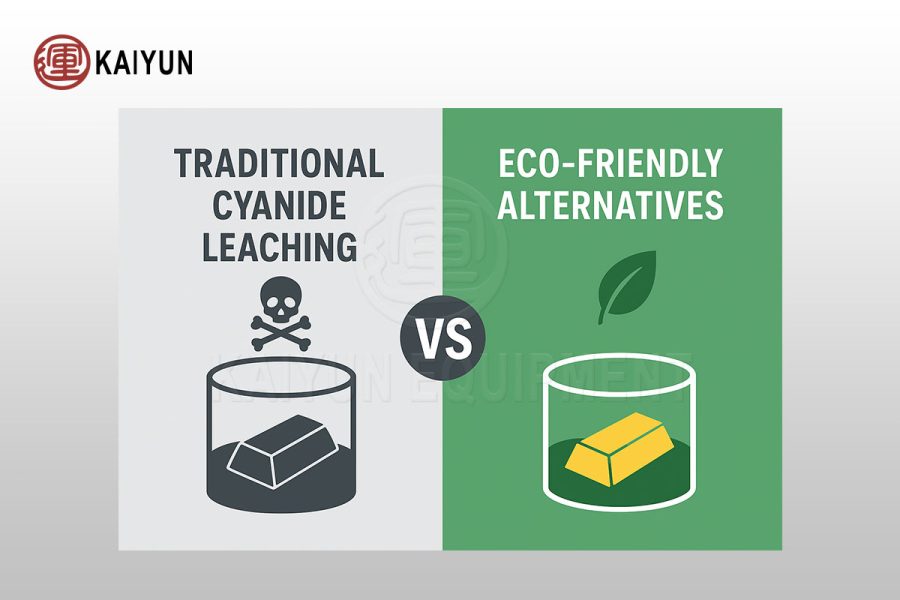Cyanide Restrictions Drive Alternative Leaching Research
For decades, cyanide leaching has been the dominant technology in gold extraction due to its high efficiency. However, its extreme toxicity and environmental risks have led to increasing restrictions worldwide. This shift has accelerated research into cyanide alternatives, including thiosulfate leaching, chloride leaching, and green reagents, offering safer and more sustainable solutions for the gold mining industry.

Thiosulfate Leaching: A Safer Alternative
Keyword: thiosulfate gold leaching
Thiosulfate, when used with suitable catalysts, can effectively dissolve gold while being far less toxic than cyanide.
Advantages: Environmentally friendly, suitable for some refractory ores.
Challenges: Complex process control and relatively higher operating costs.
Chloride Leaching: Revisiting a Classic Method
Keyword: chloride leaching process
Chloride-based leaching, using chlorine gas or chloride salts, is a well-known technique that is gaining renewed attention thanks to advances in equipment and corrosion-resistant materials.
Advantages: Fast leaching kinetics, strong adaptability to different ore types.
Challenges: Corrosive environment and higher safety requirements.
Green Reagents: The Future of Sustainable Gold Mining
Keyword: green reagents in gold leaching
Emerging technologies such as organic ligands, bioleaching, and ionic liquids represent the next generation of eco-friendly gold leaching methods.
Advantages: Low environmental impact, aligned with sustainable mining goals.
Challenges: Still at laboratory or pilot-plant stage, limited large-scale adoption.
Industry Outlook: Toward Sustainable Gold Extraction
With the global push toward carbon neutrality and sustainable mining, the adoption of cyanide-free leaching agents will continue to grow. By reducing environmental risks, mining companies not only comply with stricter regulations but also strengthen their reputation and competitiveness in the global market.